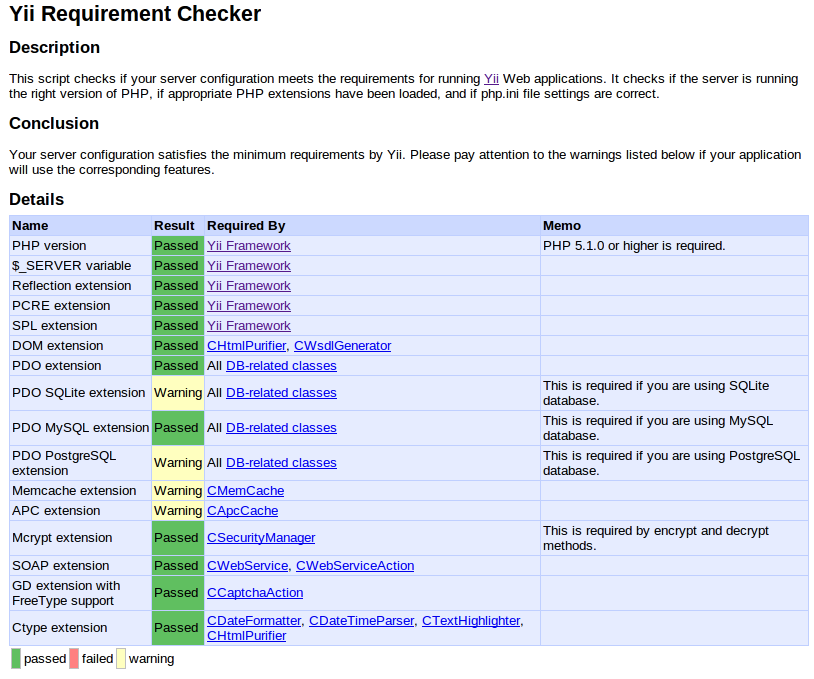© 2015 X2Engine Inc.
Difference between revisions of "Installation"
X2WikiAdmin (talk | contribs) (→Prerequisites) |
X2WikiAdmin (talk | contribs) (→Prerequisites) |
||
| Line 13: | Line 13: | ||
* Navigate to the requirements folder on your server using a web browser. '''You should see a page that looks similar to this:''' | * Navigate to the requirements folder on your server using a web browser. '''You should see a page that looks similar to this:''' | ||
| − | [[File:YiiRequirements.png | + | [[File:YiiRequirements.png]] |
'''Note that the following requirements are not necessary:''' | '''Note that the following requirements are not necessary:''' | ||
Revision as of 20:12, 13 September 2012
Prerequisites
Before installing X2EngineCRM, you should first ascertain whether your hosting environment is properly configured. The following features are required for X2EngineCRM to function properly:
- PHP version 5.3 or later
- PHP's cURL library
- A password-protected MySQL database server connection, and a database on which the user of the connection has all rights (i.e. select, drop, create and update).
- The Apache 2 web server, with mod_rewrite enabled.
Next, ensure that the requirements of Yii Framework, the application building framework on which X2Engine is designed, are met. To do this:
- Download Yii Framework and upload the "requirements" folder to your web server.
- Navigate to the requirements folder on your server using a web browser. You should see a page that looks similar to this:
Note that the following requirements are not necessary:
- The SQLite and PostgreSQL extensions; X2Engine depends on MySQL, so these other extensions will not be used.
- The DOM extension; it is not required.
- The caching extensions (Memcache, APC cache); caching is not currently required, although APC can increase performance
- The SOAP extension; the classes that depend on it are not used
Note to users of CentOS Linux, esp. release version 6:
two additional PHP packages that are non-default (but very common, and almost ubiquitous) and not installed by default with the CentOS's base php package are php-mbstring and the mcrypt module. In a shared hosting environment, these will most likely be installed already. However, if you plan on setting up your own server and using CentOS, you must install mbstring package by running yum install php-mbstring as root and restarting Apache (i.e. sudo service httpd restart). To install mcrypt, the recommended method is to first add the EPEL repository (php's mcrypt is unavailable in the default repositories). Then, it can be installed via running yum install php-mcrypt as root.
